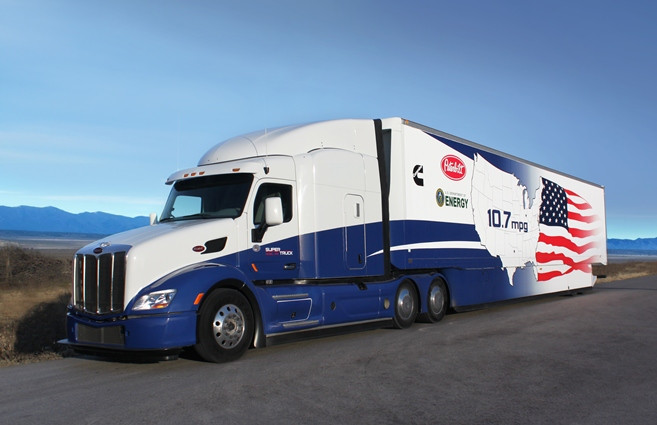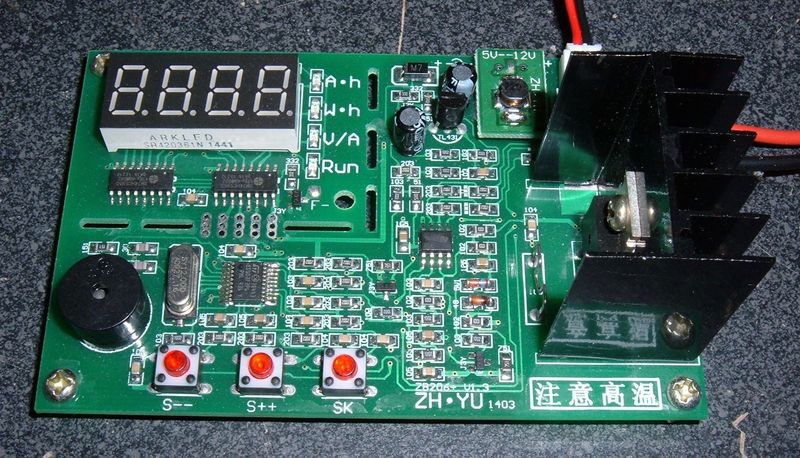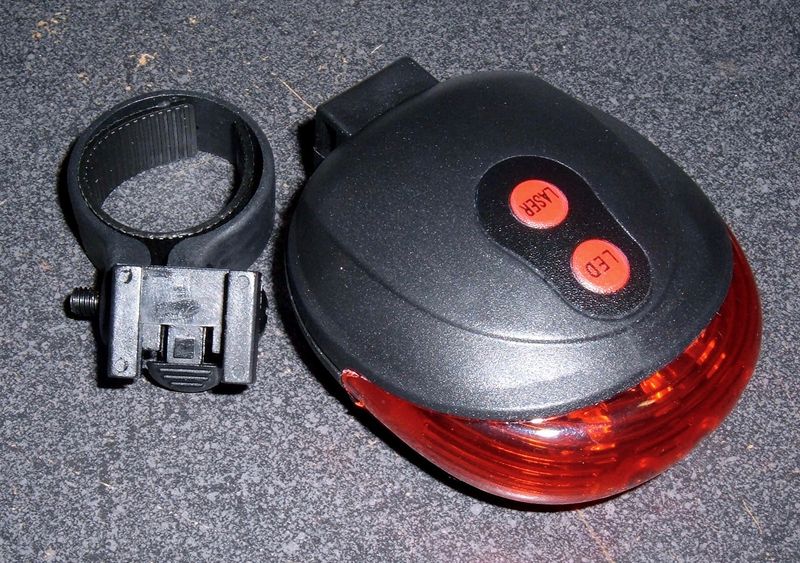I’ve delved before into what it would take to convert the world’s car fleet to battery power with our current battery technology (spoiler: lots and lots of cobalt).
What about trucks?

Semi trucks (18 wheelers, HGVs, tractor-trailers - whatever your preferred local term for the above pictured vehicle is) spend their lives hauling heavy loads around the highways. They burn an awful lot of diesel doing it, so a commonly asked question is, “Can we make them electric?”
Let’s find out! Keep reading if you’re interested in what it would take to build an electric semi!
Truck Fuel Economy & Energy Use
Looking around the internet, Peterbilt has designed a tech demonstrator that manages just over 10mpg (US gallons) with a 65,000 lb total weight. Not bad at all, given most of the semis running around will manage 6-7mpg with the same payload! To be fair, this is a tech demonstrator, with all the aero options, and a lot of special tricks (including exhaust heat recovery), but it shows what’s possible. I’ll use 10mpg (US) as my “upper end of reasonably achievable diesel fuel economy” value for this post.
To convert from diesel use to electric, the thermal efficiency of the engine is needed. A large truck diesel will be somewhere in the 35% thermally efficient range - so about 35% of the thermal energy ends up as useful mechanical energy. The engine is going to use some amount of this to run it’s own loads (coolant pumps, fans, etc), but it’s a good enough number that I’ll use it. A few percent each way only changes the final values by a few percent.
A gallon of diesel, on the other hand, is easy to work with. It contains 139,000 BTU, which (more usefully for this calculation) is 40.7 kWh of energy. A Model S battery pack contains the equivalent energy of two gallons of diesel, and a Leaf pack is barely over half a gallon. If you take the ~40mpg a typical diesel car gets, multiply by 3 (since a diesel is only 1/3rd thermally efficient), and figure for two gallons, you get 240 miles - or about what a Model S gets! I like sanity checking my figures as I go, and it’s nice to see things like this work out - it means I’m not an order of magnitude or two off.
So: back to our truck, which is rolling along I-80 through Iowa at 65k lbs, 65mph, and 10mpg (yes, I picked a very flat chunk of highway).
10mpg works out to 4.07 kWh of thermal energy per mile. At 35% thermal efficiency, this gives a mechanical energy used of 1.43 kWh per mile at highway speeds, and a sustained mechanical power output of about 95kW (~125hp). Not bad at all for 65k lbs and a slightly aerodynamically shaped box!
Truck driving duty regulations are fairly easy to find. What it works out to is 11 hours of driving a day for a truck driver (assuming they’re obeying the law). Or, ideally, about 700 miles a day worth of driving. The 14 hour limit means you can’t do this in two shifts across the day, so forget about 5 hours, a nap, then 6 hours. It’s not legal, and this is important.
Battery Pack Size
To do 700 miles at 1.43kWh/mi works out almost perfectly to 1 MWh of energy.
What does a 1MWh pack look like?
The 85kWh Model S pack weighs around 1300 lbs. Using that as a reference, a 1MWh pack would weigh around 15k lbs. That’s a lot. Like, most of the weight of a current tractor (they’re about 20k lbs).
The weight will come down in the future, and it’s probably closer to 10k lbs of pack if you build it big, but it’s still going to be damned heavy to do it safely, especially for a pack that can last the million or so miles a tractor typically does. And even at Tesla’s 2020 rates of $100/kWh, that’s still $100k of battery cells alone - plus the pack assembly, the motors, and the rest of the tractor.
The concept involves replacing the engine and transmission with a battery pack and electric motor, so there’s quite a bit of iron to get rid of, but 10k lbs of battery is still a lot.
Night Time Charging
A huge battery pack is quite useless unless it’s charged.
To recharge a 1MWh battery pack in the ~12 hours of driver downtime, the charger has to sustain an average of right around 85kW. Or, you could do it with current Tesla supercharger rates (120kW) in a bit over 8 hours - if you could fit in a stall. You might annoy a few people in the process as well.
What if you’re team driving? Then, you’ve got 11 hours driving and 1 hour downtime, endlessly. You’d need to charge at over a megawatt to fill this pack up during downtime - and that’s hard. For an 800v pack, that’s 1250A, sustained. Or 2500A on a more standard 400v pack.
The other side of the challenge is powering the charging stations (which will probably be the rest areas and truck stops scattered around the country). A small rest area with 40 truck stalls would need about 3.5MW of charging capacity, and that doesn’t count all the trucks that pull along the exit and entry ramps (which would also need to be charged).
At the other end of scale, you have places like the Iowa 80 Truck Stop in Walcott, IA. It’s got 900 truck parking spots. If you want to outfit all of those with a 100kW charger, you’re looking at 90MW worth of power capacity - and if you throw in a few quick chargers for those team drivers, an even 100MW of power seems reasonable.
That’s a LOT of power. It’s certainly doable, but running the power out to the truck stops and rest areas (which are often in the middle of nowhere) is going to be a massive infrastructure project.
Right now, we’re in the realm of “technically possible, but unlikely in the near term.” And if trucks can’t charge, trucks don’t roll.
Let’s look at some other options.
Series Hybrid Trucks
A series hybrid (of the “plug in hybrid” variety) solution is radically more interesting for long haul trucking - and more importantly, it’s an option that is immediately useful, even while charging stations are being built out.
There are at least two series hybrid systems on the market right now for trucks.
The first is Via Motors. They heavily modify a Chevy pickup to include a 23kWh battery pack, a 115kW (150hp) generator, and a 190kW (255hp) electric motor. This is a nice work truck, especially if you need site power. It has up to 14.4kW of site power output, and will only run the generator as needed.
The second company is WrightSpeed. They have several platforms, one of which is a heavy chassis designed for garbage trucks and similar heavy vehicles. The WrightSpeed platforms are pure series hybrids as well, with a variety of generator options including a microturbine designed for dirty methane (say, coming from a landfill). They’re plenty powerful for over the road use (up to 500hp), and can recover huge amounts of energy with regenerative braking (up to 1000hp worth of energy recovery).
Advantages of a Series Hybrid Truck
A series hybrid truck has several very significant advantages over both the current diesel trucks used for hauling, and over a purely electric truck.
I envision a truck with 100-300kWh of battery capacity, and a totally separate generator module that runs on diesel (though CNG could be a possibility as well). This generator doesn’t have to generate useful rotary motion either - only electricity. So currently exotic engine designs like a free piston linear alternator can be used. If the generator design is sufficiently modular, the generator can even be replaced with a different version during the truck’s life, if the savings are enough to justify it.
Noise
A major advantage of an electric drivetrain, especially in cities, is that it’s quiet. A series hybrid truck with a large battery pack can move nearly silently during the start and end of it’s trip when it’s in a city. Even a 100kWh pack offers over 60 miles of pure electric range, which is plenty to get out onto the highway and to get into town at the end of a trip.
Additionally, with a large battery pack, the truck won’t need an APU.
Fueling
The key problem with a purely electric over the road truck relates to energy. A pack large enough for a day’s driving is a very large pack, and the infrastructure needed to charge it is significant.
With a series hybrid approach, both of these problems become less significant. A more reasonably sized battery pack can be installed, keeping the cost and weight down. If you can charge off shift, you do (it’ll be cheaper than diesel), and if not, you run diesel or CNG.
Regenerative Braking
Another major advantage of having a battery pack is that it provides a place to store energy from regenerative braking. Trucks regularly use engine braking to slow down (the machine gun staccato of a “Jake brake” is loud enough that it’s banned in many towns), and both coming down from speed on the flats, and coming down a grade, there’s a lot of energy that can be recovered. Instead of turning it into noise and brake wear, that energy can be recovered for later use.
Drivability
This is no different from what one would find with a pure electric truck, but a series hybrid truck will require no shifting, even when heavy. It’ll simply pull from low speed up to cruise, and probably be a good bit quicker to speed as well due to the continuous power delivery.
Pollution
An electric truck operating in pure electric mode doesn’t emit NOx, particulate matter, unburned, hydrocarbons, or anything else that upsets air quality boards in cities and states.
California, as of 2013, requires trucks entering their state to have some sort of aerodynamic improvements, and this has driven a major surge in trailers with aero kits. If some large cities were to require pollution-free systems for final delivery, these trucks would work, but would still be able to get across the country on a schedule.
Microturbines are apparently also capable of burning cleanly with minimal exhaust treatment - so the weight and complexity savings make something like that worth it (this is one of WrightSpeed’s options).
Proposed Design
First things first: I’m not experienced in the design of trucks. I mostly play in much smaller systems. This is my “back of a napkin” level design.
If I were to design an over the road truck, I’d build a series hybrid system - this makes it usable in 2016, instead of relying on a charging infrastructure that has yet to be built.
I’d put around a 100kWh battery pack in it - possibly more, if it was likely to be working in a mountainous region. I’d focus on power density over energy density, so something like lithium titanate would be a good option. The pack needs to be able to provide a lot of power, absorb a lot of power, and it’s in a heavy tractor anyway, so weight matters less.
The generator would be a diesel plant of around 250hp. This is smaller than most truck engines, but provides an excess of power over that needed to cruise, even with wind. This engine would be optimized for running at a fixed speed, with the intake, valve timing, and exhaust set up for maximum efficiency at the operating RPM. For size and weight reasons, I’d use a turbodiesel, perhaps with post-turbo power recovery turbines to extract all the energy possible from the diesel.
The drivetrain would be a standard electric motor and reduction gear setup (probably AC induction, though could be permanent magnet based if this makes more sense), driving both drive axles. It might make sense to use two separate motors - one for the front drive axle, one for the rear. This allows for lower power motors, and offers redundancy if one motor fails.
Finally, a key element would be an integrated navigation and charge control system. There’s no point in charging to 100% if the next 50 miles will be downhill - if there’s nowhere to put the recovered energy, the friction brakes will be used. Terrain data is easily available, so with knowledge of the route ahead, an intelligent system could control both charging and generator use to optimize fuel consumption. Ideally, all city driving would be on battery for noise reasons, the truck would never need to use the friction brakes (because there’s sufficient battery capacity to sink the energy), and the truck would arrive at an overnight stop with charging with a nearly flat battery (so it can make the most of the charging available).
This design should allow for a significant energy savings over today’s trucks, while still keeping the ability to run cross country on diesel. And, it doesn’t require any breakthroughs in technology - you could literally go out and build one today, if you wanted.
Thoughts? Comments? Improvements you can think of? Let me know in the comments!
Comments
Comments are handled on my Discourse forum - you'll need to create an account there to post comments.If you've found this post useful, insightful, or informative, why not support me on Ko-fi? And if you'd like to be notified of new posts (I post every two weeks), you can follow my blog via email! Of course, if you like RSS, I support that too.







